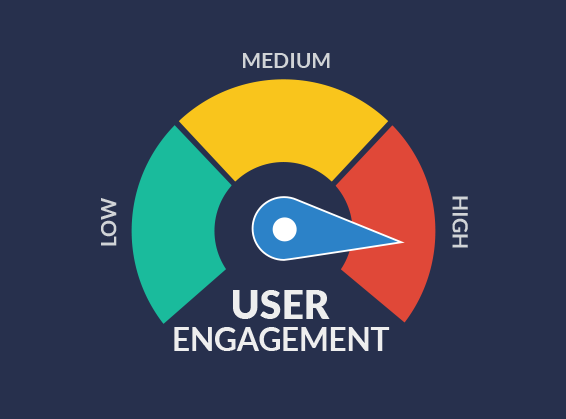Introduction:
In the vast digital landscape, the art of SEO writing is essential for bloggers and content creators striving to boost their online visibility. Crafting blog posts that not only resonate with your audience but also rank high on Google requires a strategic approach. In this comprehensive guide, we’ll delve into 13 invaluable tips to help you master the art of SEO writing and create blog content that consistently earns a coveted spot on Google’s search results.
Conduct Thorough Keyword Research:
The foundation of any successful SEO writing strategy is thorough keyword research. Identify relevant keywords and phrases that align with your content and target audience. Leverage keyword research tools to understand search volume, competition, and user intent. Incorporate these keywords strategically throughout your blog post to signal to search engines that your content is highly relevant to specific queries.
Create Compelling and Click-Worthy Titles:
Crafting a captivating title is crucial for grabbing the attention of both readers and search engines. Develop titles that are not only keyword-rich but also intriguing and promise value to your audience. Include numbers, questions, or power words to make your titles more compelling. Ensure your title accurately reflects the content of your blog post to maintain trust and credibility with your audience and search engines.
Optimize Meta Descriptions:
Meta descriptions serve as a brief summary of your content in search engine results. Craft concise and persuasive meta descriptions that encourage clicks. Include relevant keywords while providing a clear preview of what readers can expect from your blog post. A compelling meta description can significantly impact click-through rates and enhance your overall search engine visibility.

Produce High-Quality and Comprehensive Content:
Google prioritizes content that provides valuable information and a positive user experience. Create in-depth, well-researched, and informative blog posts that address the needs and interests of your target audience. Break down complex topics into easily digestible sections, using headers and bullet points to improve readability. Longer, comprehensive content tends to perform better in search rankings.
Optimize Heading Tags:
Properly structure your content using heading tags (H1, H2, H3, etc.) to signal the hierarchy and organization of your information. Place your primary keyword in the H1 tag, and use H2 and H3 tags to organize subheadings and subtopics. This not only improves the readability of your content but also helps search engines understand the context and relevance of different sections.
Utilize Internal and External Links:
Internal and external links play a crucial role in SEO. Include relevant internal links to other pages on your website to enhance the user experience and guide readers to additional valuable content. Incorporate authoritative external links to reputable sources, demonstrating to search engines that your content is well-researched and credible. Properly use anchor text with relevant keywords for both internal and external links.
Optimize Images for SEO:
Images not only enhance the visual appeal of your blog post but also contribute to SEO. Optimize image file names and alt text with descriptive keywords. Compress images to improve page loading speed, a factor Google considers in its ranking algorithm. Image optimization not only improves the accessibility of your content but also signals to search engines the relevance of your visuals to the overall topic.
Prioritize Page Loading Speed:
Page loading speed is a critical factor in user experience and SEO. Optimize your website’s performance by compressing images, leveraging browser caching, and minimizing unnecessary scripts. Use tools like Google PageSpeed Insights to identify and address performance issues. A faster-loading website not only improves user satisfaction but also positively influences your search engine rankings.
Mobile Optimization is Crucial:
With the increasing use of smartphones, mobile optimization is no longer optional. Ensure your blog posts are mobile-friendly and provide a seamless experience across various devices. Google prioritizes mobile-friendly websites in its search rankings, making it essential to adopt responsive design and test your content’s appearance on different screen sizes.

Encourage User Engagement:
Engagement metrics, such as bounce rate, time on page, and social shares, are crucial signals for search engines. Craft engaging and interactive content that encourages readers to stay on your page longer. Include calls-to-action that prompt users to comment, share, or explore other pages on your website. High engagement rates contribute positively to your overall SEO efforts.
Regularly Update and Refresh Content:
Freshness is a factor Google considers when ranking content. Regularly update and refresh your blog posts to ensure they remain relevant and accurate. Add new information, update statistics, and refresh outdated content to maintain its value over time. This practice signals to search engines that your content is current and worthy of continued visibility.
Utilize Social Media for Promotion:
Social media signals, such as shares and likes, indirectly impact your SEO. Promote your blog posts on social media platforms to increase visibility and drive traffic. Social signals contribute to your content’s authority and influence its position in search results. Encourage your audience to share your content, expanding its reach and potentially attracting backlinks, another important factor in SEO.
Monitor and Analyze Performance:
Regularly monitor the performance of your blog posts using analytics tools. Track key metrics such as organic traffic, keyword rankings, and user behavior. Identify successful strategies and areas for improvement. Analyzing performance data allows you to refine your SEO writing approach and adapt to changes in search engine algorithms, ensuring the continued success of your content.
Conclusion:
Mastering SEO writing is an ongoing process that requires a combination of strategic thinking, creativity, and adaptability. By incorporating these 13 tips into your content creation process, you’ll not only enhance your blog posts’ search engine visibility but also provide valuable information and a positive user experience for your audience. Stay informed about the latest SEO trends, continuously refine your approach, and watch your blog posts climb the ranks on Google’s search results.
